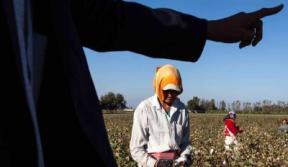Publication Date:
A product of the ongoing ‘Monitoring of Children and Students in the Cotton Fields in Tajikistan’ project conducted by International Organization for Migration (IOM) and sponsored by the United States Department of State’s Bureau for International Narcotics and Law Enforcement Affairs (INL), this report represents the third annual assessment of the project’s monitoring, analytic, and preventative measures.
As in previous years, the project’s objective remains the provision of assistance to the Government of Tajikistan (GOT) in the latter’s implementation of its National Action Plan on Combating Human Trafficking, 2011–2013. IOM’s efforts, as outlined in this report, have been focused within the scope of this Action Plan on monitoring and preventing the use of child labour in cotton harvesting – in addition to furthering efforts to move the Tajik labour market away from the broader use of child labour as per the Government of Tajikistan’s ‘State Strategy on Labour Market Development until 2020.’ As in previous years, the 2012 Cotton Monitoring Campaign’s immediate objectives remained an assessment of the overall progress made in Tajikistan to prevent the use of child labour in the cotton harvest, as well the heightening of coordination between NGOs and GOT agencies and general social awareness about the exploitation of child labour.
With these objectives in mind, and building upon previous years’ efforts and successes, IOM made sure during the 2012 Tajik cotton harvest monitoring (October–December 2012) to strengthen relationships with individual government officials, the Tajik Government’s Inter-Ministerial Commission for Combating Trafficking in Persons (IMCCTIP), and others along the effective cotton monitoring referral mechanism developed in 2011. In addition, cotton-picking monitoring was conducted in coordination with both government officials and independent NGOs. The results of this year’s monitoring campaign were then compared against statistics from previous monitoring efforts, and placed in the context of
broader trends occurring in Tajikistan in relation to the production of cotton and the use of child labour.

